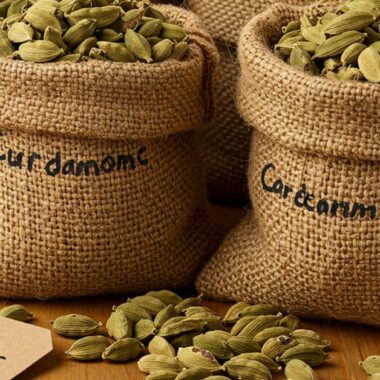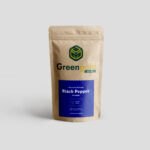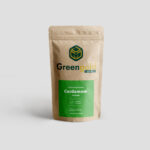Cardamom, known as the Queen of Spices, is a high-value crop that thrives in humid, shaded environments. Starting a small-scale cardamom farm can be profitable if done with the right planning and techniques. ✅
Here’s a step-by-step guide to successfully starting your own cardamom farm! 🌾🌱
📍 1. Choosing the Right Location
Cardamom requires specific climate and soil conditions to grow well.
✅ Altitude: 600 – 1,500 meters above sea level
✅ Temperature: 10°C – 35°C 🌡️
✅ Rainfall: 1,500 – 2,500 mm per year 🌧️
✅ Soil Type: Well-drained, loamy soil with pH 5.5 – 6.5 🌱
💡 Tip: Cardamom grows best under 50-60% shade, so select an area with tall trees or plant shade trees like Silver Oak! 🌳
🌱 2. Selecting Cardamom Varieties
There are three main types of cardamom. Choose the variety that best suits your climate and market demand.
✅ Best Varieties for Small-Scale Farming:
🔹 Malabar Cardamom – High yield, common in Idukki
🔹 Mysore Cardamom – Larger pods, strong aroma
🔹 Vazhuka (Hybrid) – Disease-resistant, high production
💡 Tip: Green Cardamom (Elettaria cardamomum) is the most profitable variety due to high demand in the spice market.
🌾 3. Propagation: Growing from Seeds or Suckers
Cardamom can be grown from seeds or vegetative suckers.
🌱 3.1 Growing from Seeds
✅ Use disease-free seeds from high-yield plants.
✅ Soak seeds in water for 24 hours before sowing.
✅ Plant in nursery beds with rich organic soil.
✅ Germination takes 30-40 days.
🌿 3.2 Growing from Suckers (Recommended for Faster Yield)
✅ Select healthy rhizomes with 2-3 shoots.
✅ Plant directly in the field at 1.5 – 2 meters spacing.
✅ Faster growth and better survival rate.
💡 Tip: Growing from suckers reduces waiting time for harvesting compared to seeds! 🚀
📅 4. Planting and Farm Layout
Cardamom plants require proper spacing and care for maximum yield.
✅ Ideal Planting Method:
✔️ Spacing: 1.5m × 1.5m (for better airflow & sunlight)
✔️ Plant Depth: 5-8 cm deep
✔️ Shade Trees: Maintain 50-60% shade for moisture retention
✔️ Mulching: Use dried leaves, grass, or coconut husk to retain soil moisture
💡 Tip: Intercrop cardamom with coffee, pepper, or banana for additional income! ☕🍌
💧 5. Water Management & Irrigation
🚰 Cardamom needs regular watering but hates waterlogging!
✅ Drip Irrigation – Best for small farms, saves water 💧
✅ Sprinkler Irrigation – Helps maintain humidity 🌿
✅ Avoid Waterlogging – Ensure proper drainage 🚱
💡 Tip: Watering twice a week during dry seasons improves yield!
🍃 6. Organic Fertilization for High-Quality Cardamom
To ensure healthy growth and strong aroma, use organic fertilizers.
✅ Compost & Cow Manure – Improves soil fertility 🐄
✅ Neem Cake – Controls soil pests naturally 🌿
✅ Bone Meal – Strengthens root growth 🦴
💡 Tip: Apply fertilizers every 2-3 months for better pod development!
🐜 7. Pest & Disease Management
🌱 Common Pests & Their Natural Control:
🚨 Thrips & Borers – Use neem oil spray
🚨 Root Grubs – Introduce natural predators like fungi-based biocontrol
🚨 Fungal Diseases – Improve drainage & use Trichoderma bio-fungicides
💡 Tip: Regular mulching & pruning reduces pest attacks! ✂️
✂️ 8. Harvesting & Post-Harvest Processing
Cardamom plants take 2-3 years to start yielding. Pods are harvested when slightly immature to retain aroma.
✅ Harvesting Tips:
✔️ Pick pods every 30-40 days during harvest season 📅
✔️ Hand-pick for best quality or use shear cutting
✔️ Dry pods at 45-50°C for 7-10 days to retain green color
💡 Tip: Well-dried cardamom fetches premium prices in the market! 💰
🛒 Where to Sell Small-Scale Cardamom Harvest?
Once you have your first yield, you can sell cardamom:
✔️ Online stores & e-commerce (Amazon, Flipkart, Greengold Guide Store)
✔️ Local spice markets & wholesale traders
✔️ Export to international buyers
✔️ Sell directly to Ayurvedic & herbal product companies
💡 Tip: Organic certification can help get better prices in the export market! 🌍
🏆 Key Takeaways for Small-Scale Cardamom Farming
✔️ Choose a humid, shaded location for planting.
✔️ Use high-yielding varieties like Malabar or Mysore cardamom.
✔️ Grow from suckers for faster yields.
✔️ Use organic fertilizers to maintain soil health.
✔️ Maintain proper irrigation & drainage to prevent diseases.
✔️ Harvest pods when slightly immature for best quality & price.
🛍️ Buy Premium Idukki Cardamom from Our Store!
For the best handpicked, farm-fresh cardamom, visit our shop:
👉 Shop Now 🛒💚
🌟 Conclusion
Starting a small-scale cardamom farm requires proper planning, organic care, and patience. With the right techniques, small farmers can achieve high-quality yields and good market prices. 🚜🌱












